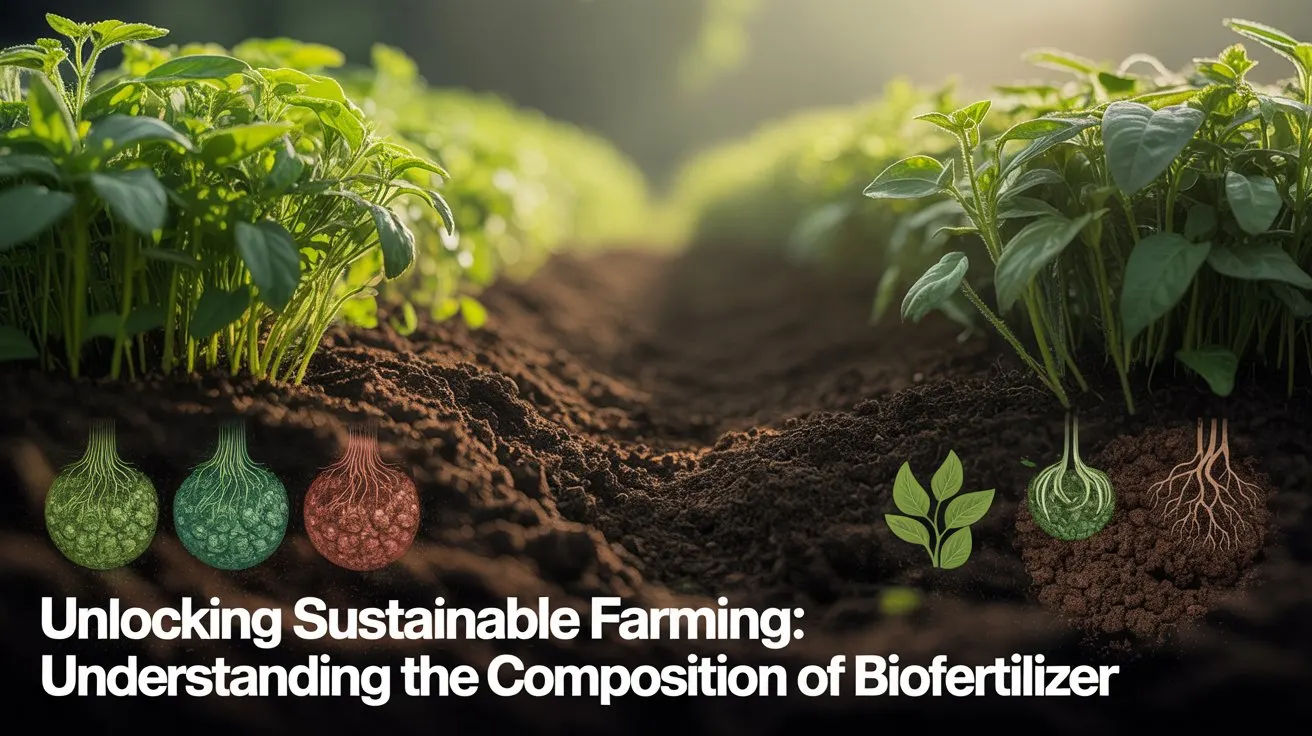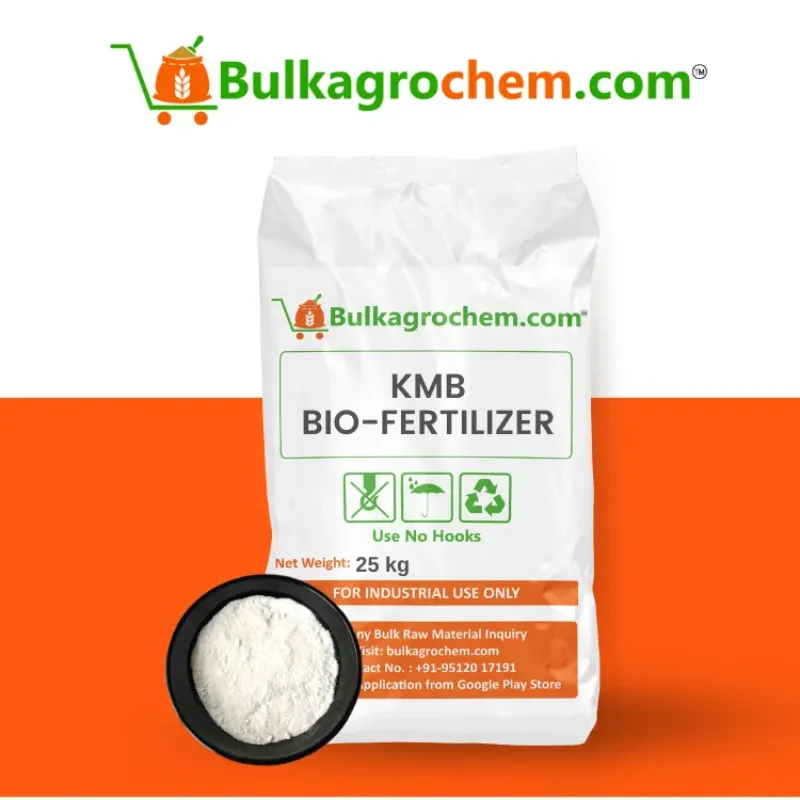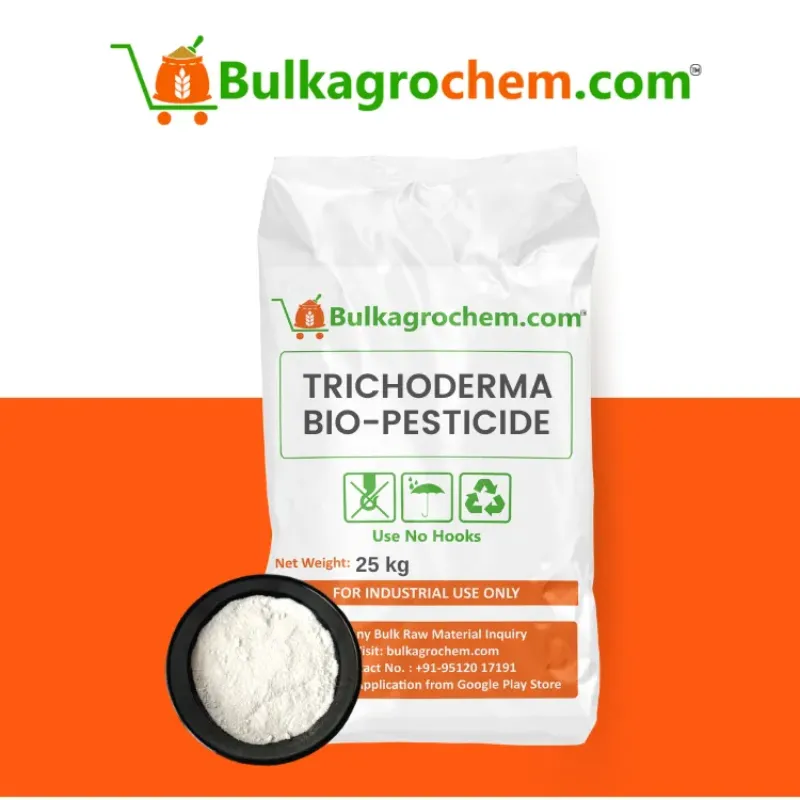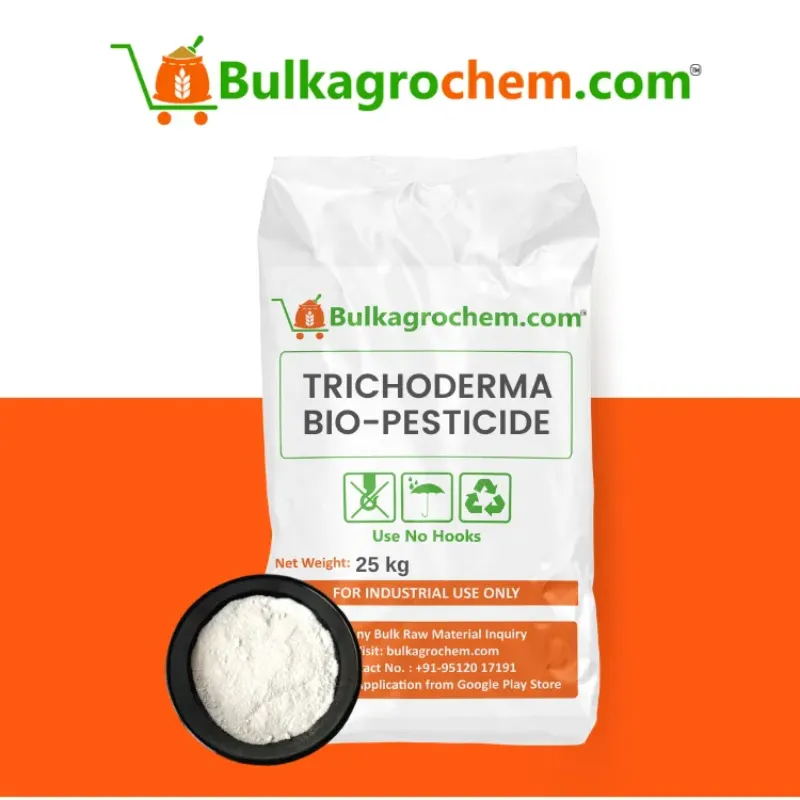Biofertilizer is a natural and sustainable input for supporting agriculture that increases fertility in soils while at the same time protecting the environment.
Biofertilizers may contain microorganisms that are earth-friendly and living. These microorganisms, which include bacteria, fungi, and algae, aid the absorption of nitrogen, phosphorus, and potassium to their host plants.
Biofertilizers have a variety of species such as Rhizobium (for fixing nitrogen for legumes), Azospirillum and Azotobacter (both beneficial for non-leguminous crops), and also include phosphate-solubilizing bacteria and mycorrhizal fungi; they feed and make soil nutrients available to plant roots.
In agriculture biofertilizer use, the living beings make direct interventions with the plants root system, providing better soil structure, increased nutrient uptake, and soil health over the long-term. They can also diminish the amount the grower has to spend on synthetic fertilizers, making the healthier agriculture system far less costly to the grower.
Whether it is rice paddy, or vegetable farmers, biofertilizers are playing a significant role in creating resilient, productive, and sustainable agriculture systems worldwide.
Introduction: Why Biofertilizers Are Key to Future Farming
As environmental issues continue to rise and food demands grow, biofertilizers are an intelligent, sustainable alternative to chemical fertilizers in today’s world. Chemical fertilizers can degrade soil health and lead to water pollution, whereas biofertilizer can increase crop yield and lessen environmental impacts. Biofertilizer can improve the composition of the soil by adding beneficial forms of bacteria, fungi, and algae. Biofertilizers are made up of living microorganisms that not only help plants to obtain nutrients from the soil itself, but don’t add harmful chemical nutrients to the soil when used. Thus, farmers can enrich the soil while also preventing excessive use of potentially harmful chemicals.
Eco-Friendly Fertilizers for Climate-Smart Agriculture
Biofertilizers provide an essential role in climate-smart agriculture, as they help to decrease greenhouse gas emissions, while preserving the biodiversity of soils.
They provide the following benefits:
- Lower carbon footprint, when compared to synthetic fertilizers.
- Promote sustainable nutrient cycling into soils.
- Enhance root structure for greater drought tolerance.
- Decrease nitrate leaching to water bodies.
- Promote long-term soil fertility without chemical build up.
From Synthetic Salts to Living Microbial Solutions
Fertilizers are usually based on chemical fertilizers, which contain synthetic salts that dissolve quickly, and can easily be detrimental to the environment. Biofertilizers contain live microbes, which live naturally within plants roots systems.
Benefits of Microbial Solutions:
- They fix atmospheric nitrogen naturally (Example: Rhizobium, Azotobacter).
- Solubilize phosphorus and potassium to enhance uptake by plants.
- Provide improved immunity towards some diseases.
- Support organic farming.
- A focus area of biofertilizer initiatives in sustainable agriculture throughout the world.
Core Composition of Biofertilizer and Their Functions
Biofertilizers have the real power in their combination of beneficial microorganisms. Biofertilizers are made for the purpose of supplying nutrients using natural processes, but they also support and maintain long term soil health under agriculture biofertilizer systems. Biofertilizers reduce reliance on chemical fertilizer.
Nitrogen-Fixing Bacteria — Engine of Natural N Supply
Nitrogen-fixing bacteria are an important influence in most biofertilizers. These microbes convert atmospheric nitrogen into biological usable forms that plants can easily uptake.
We're discussing:
- Rhizobium with legumes (soybeans, lentils, peas).
- Azotobacter and Azospirillum with cereals, vegetables, non-legumes.
- Promotes crop yields by decreasing reliance on synthetic nitrogen fertilizers.
- Promotes vigorous vegetative growth and a greener surface.
Phosphate-Solubilizing Microbes — Unlocking Bound P
Soil phosphorus is often present in forms that are not available to plants. Phosphate-solubilizing bacteria (PSB) secrete organic acids that solubilize phosphorus.
Main Benefits:
- Improves phosphorus availability to develop roots.
- Facilitates flowering, seed development/preparation, and energy transfer.
- Widely present in bio fertilizer mixes for crops of fruits, grains, and vegetables.
Potassium-Mobilizing Consortia — Stress-Proofing Yields
Potassium is known to improve plant stress, disease, and weather resistance. Some bio-fertilizers include potassium-solubilizing bacteria (KSB), who free up potassium that is otherwise locked up in the soil.
Benefits:
- Improved water regulation and disease resistance,
- Improved fruit and seed quality, /br
- Increased plant tolerance to drought, heat, and pests.
Mycorrhizal Fungi & PGPR — Root Expansion and Immunity
Biofertilizers typically also can contain mycorrhizal fungi, and Plant Growth Promoting Rhizobacteria, both of which have important functions:
- Mycorrhizae essentially extend the root zone of the plants by improving their water and nutrient uptake abilities.
- In contrast PGPR can boost hormone production in plants, improve root structure, while suppressing some pathogens.
- These contribute to a holistic agriculture biofertilizer programs of our modern agriculture society.
The Science Behind Biofertilizers: How They Transform Soil Health
Biofertilizers are centered on a complex but natural system of biological processes, which restore and promote soil health. Rather than supplying nutrients through chemical fertilizers, biofertilizer's formulation ensures the mechanistic function of soil as a living system, supporting long term productivity in agricultural biofertilizer practices.
Biological Nitrogen Fixation & Carbon Cycling
Biological nitrogen fixation is one of the most important roles of biofertilizers. Some types of bacteria are able to capture nitrogen from the atmosphere, and when they fix it into ammonium, it becomes plant-available nitrogen.
Key Processes:
- Both Rhizobium and Azotobacter directly fix nitrogen into the root zone.
- Facilitates a continuous source of nitrogen without external input.
- Contributes organic carbon to support soil biodiversity.
- Assists environmentally friendly and sustainable agriculture practices through a reduced reliance on fertilizer.
Organic-Acid Pathways for Mineral Weathering
Many biofertilizers will produce organic acids that will significantly increase the dissolution of bound minerals in the soil, especially phosphorus and micronutrients. Key Processes:
- Organic acids such as citric acid, oxalic acid, and gluconic acid effectively break down insoluble minerals.
- Access to phosphorus, zinc, iron and calcium for the plant stems is established.
- Maintains optimal levels of both macro and micronutrients for crop utilization.
- Offers plants maximal utilization of soil reserves, and reduced reliance on external inputs.
Microbial Exudates Building Humus & Water-Holding
Another important role of biofertilizers is to enhance soil structure through microbial exudates.
Benefits:
- Microorganisms secrete sticky polysaccharides and proteins to adhere to soil particles.
- Enhances soil aggregation and humification.
- Increases soil water holding capacity, so crops will be better able to withstand drought conditions.
- Enhances long-term fertility and a stable growing environment.
Diverse Types of Agriculture Biofertilizer and Their Unique Compositions
Biofertilizer compositions vary based on factors such as the target crop, soil condition, and farming system. Each type of biofertilizer consists of different mixes of microorganisms that perform specialized functions. Thus, agriculture biofertilizer is extremely flexible and customizable for modern farming.
Bacterial vs. Fungal Formulations
 Azotobacter-Based vs. Rhizobial Blends
Azotobacter-Based vs. Rhizobial Blends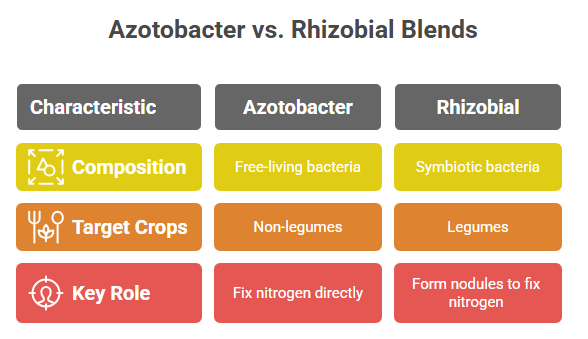
Liquid, Solid, and Nano-Carrier Delivery Systems
Modern biofertilizers are available in various delivery forms to match specific farm needs and application methods.
Environmental Impact and Economic Benefits of Using Biofertilizers
The adoption of biofertilizers in agriculture has economic and environmental benefits. With biofertilizers being a natural composition, they are both one way to reduce chemical dependency, while also enabling farmers to profitably farm using sustainable systems. With all of this in mind, agricultural biofertilizers are becoming a valuable way to support climate smart agriculture.
Lower Carbon Footprint & Reduced Run-Off
Biofertilizers are unique in that they do not involve an energy-intensive production method, like synthetic nitrogen fertilizers which rely on the Haber-Bosch process. This leads to a significant reduction in the carbon footprint.
Environmental benefits include:
- Decreased greenhouse gas emissions
- Reduced energy inputs from production
- Reduced runoff of nitrates and phosphates in rivers and lakes
- Reduced water quality pollution and eutrophication so aquatic ecosystems can be preserved
Biofertilizers enable the release of nutrients to be matched to plant demand and if they are tied to, or if the nutrients are taken up by living microbes, will minimize the nutrient loss to the environment because the microbes are alive.
Cost Savings Compared to High-Salt Programs
High-salt chemical fertilizers can be costly, especially for smaller producers. Biofertilizers help reduce costs and keep farmer inputs down over time. Here are some costs benefits:
- Cheap fertilizer costs or no fertilizer purchase costs.
- Decrease the need for multiple applications of expensive fertilizers.
- Get the fertility working better in a sustainable way that diminishes the need for future inputs.
- Improve yields through sustainable means instead of chemically dependent means.
Improve soil health and using biofertilizer adds carbon to the soil so the composition of designed biofertilizers, takes a system of fertility that does not need cost inputs season after season.
Premium Market Access for Climate-Smart Outputs
There is a significant amount of consumer demand for eco-friendly and organic produce. The use of agriculture bio-fertilizers could allow farmers to access premium markets.
Here are some market advantages:
- More readily applicable to certify organic or eco-labeled produce.
- Export markets tend to value sustainability.
- More money for their climate-smart agricultural products in towns, cities, etc.
Sustainability is trending and biofertilizers are an important selling point on farms today, particularly for farmers who are targeting health-conscious consumers.
Choosing the Right Composition of Biofertilizer for Your Farm
Choosing the right formulation of biofertilizer is essential to achieve optimal crop performance, maintain soil health, and improve sustainability on the farm. Different biofertilizers contain all types of different strains and carriers, so careful matching of the biofertilizer formulation to your farm's conditions will ensure maximum efficacy with agriculture biofertilizer application.
Reading Labels—CFU, Carrier, Shelf Life
When choosing biofertilizers, understanding product labels is key:
Key Components to Check:
- CFU (Colony Forming Units): Indicates the concentration of living microbes per gram or ml.Higher CFU means greater microbial activity.
- Carrier Material: Solid (peat, charcoal, compost) or liquid carriers that protect microbes.Liquid carriers are easier to apply but may have a shorter shelf life.
- Shelf Life: Varies from 6 months to 2 years depending on the composition of biofertilizer and storage conditions.
Reading these factors allows farmers to select stable, effective biofertilizers that fit their usage schedule and storage capabilities.
Matching Microbial Consortia to Crop & Soil pH
Different crops and soil types require specific biofertilizer compositions to deliver maximum benefit.
Tips for Matching Biofertilizers:
- Nitrogen-fixers (Azotobacter, Rhizobium): Ideal for legumes and leafy crops.
- Phosphate-solubilizers (Bacillus, Pseudomonas): Best for phosphorus-deficient soils.
- Mycorrhizal fungi: Suitable for fruit trees, vegetables, and acidic soils.
- Potassium mobilizers: Helpful for flowering and fruiting crops.
Soil pH Consideration:
- Acidic soils may favor mycorrhizae and certain bacteria.
- Neutral to slightly alkaline soils often support Rhizobium and Azotobacter populations.
Choosing the right microbial blend ensures better survival and performance of biofertilizers under varying farm conditions.
Seed, Soil, and Foliar Application Routes
The method of application affects how efficiently the biofertilizers colonize plant roots or soil.
Application Methods:
- Seed Treatment: Coating seeds with biofertilizer to promote early root colonization.
- Soil Application: Broadcasting or incorporating into soil before planting.
- Foliar Spray: Applying diluted biofertilizers directly to leaves for nutrient absorption.
The selected composition of biofertilizer must be compatible with the chosen application route for maximum microbial survival and effectiveness.
FAQS
Q1 Which component is most critical for nitrogen-hungry crops?
The composition of biofertilizer rich in nitrogen-fixing bacteria is most critical for nitrogen-hungry crops.
Q2 Can phosphate-solubilizers work in alkaline soils?
Yes, phosphate-solubilizing biofertilizers can function in alkaline soils but may require pH-compatible strains.
Q3 How soon do mycorrhizae improve drought tolerance?
Mycorrhizae in agriculture biofertilizers often start improving drought tolerance within weeks of root colonization.
Q4 Do potassium-mobilizers replace potash entirely?
Potassium-mobilizing biofertilizers supplement but do not fully replace potash fertilizers.
Q5 Will biocontrol bacteria clash with fungal components?
Biocontrol bacteria in biofertilizers are generally compatible and can synergize with fungal components when properly formulated.
Conclusion: Embrace Next-Gen Agriculture Biofertilizer for Greener, Profitable Fields
Modern agriculture is changing and the use of contemporary biofertilizers is becoming necessary for sustainable agricultural methods and practices. The composition of biofertilizer is conveniently designed to allow farmers to biologically enhance fertility and lessen chemical reliance of soils while positively influencing the environment directly (ACE, 2022).
Agriculture biofertilizer formulations differ from chemical fertilizers not only in the material source, but in that they harness the synergies and unique benefits of auxiliaries, combining nitrogen-fixing bacteria, mycorrhizal fungi, potassium mobilizing consortia, and phosphate solubilizing microbes. By integrating these components into a balanced super fertilizer, it provides nutritional synergy, while developing the root system, increasing uptake capabilities, while simultaneously enhancing and developing soil structure type within the breeding environment.

